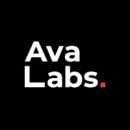Blockchain can be complicated, and even the most seasoned of users can face hurdles applying it to their existing applications. That’s why Ava Labs has created tools and product suites like Avalanche and Core to speed up the blockchain smart contract process and give users a free way to securely use Web3.
Ava Labs has reached mainnet with its product suites, meaning the Avalanche and Core are ready for public use. But Ava Labs recognizes the need for these kinds of tools to be accessible to users, builders and developers alike.
“Most recently, we realized that we need to provide the same tools for builders,” Nick Mussallem, SVP of Product at Ava Labs told Built In. “AvaCloud makes it as easy as possible for anyone to launch a custom blockchain. Let the business focus on getting their application to market while we maintain it for them.”
How exactly does Ava Labs achieve all of this? It’s part product development process and part company culture. The company knows that being collaborative is key to creating meaningful and functional products.
“We have an exciting and collaborative culture. Everyone works very closely together on the team and with the rest of the organization,” Mussallem said. “That culture in combination with being on the forefront of technology naturally keeps everyone motivated.”
Built In spoke with Mussallem about how Ava Labs has built products that help users and builders alike make the most of blockchain and Web3 technology. And the impact they are hoping to have isn’t small.
“We are building product solutions that put the power of Avalanche into the hands of users and builders in a way that they can launch and use apps that are changing the world,” he said.
Why did Ava Labs need to build this product? What gave rise to it, and what impact will this product launch have on the business or its customers?
Upon first launching into mainnet it became immediately apparent that we had deployed a world class layer 1 technology with some game-changing differentiators; particularly in the new and novel consensus model, Avalanche Consensus, and the ability to deploy custom blockchains in the form of subnets.
While the technology was groundbreaking, it was also complex. So we had the opportunity to build products that showcased its potential.
This led to us developing the consumer tools that would enable our user base to interact with this technology suite. This area, Core Properties, makes up our consumer-facing products and includes our wallet suite called Core, which is supported by a web version, mobile version and a browser extension.
What role did you play in developing and launching the product? What tools or technologies did your team use to build the product and why?
I was the first product hire at Ava Labs. I came in just in time to help shepherd the mainnet launch. After that, I was able to design several zero to one projects. Now the product team has grown to nearly 45 members, and everyone participates in the full product development lifecycle.
The product group has eight functional teams, including design, analytics, marketing and support. We use a large set of tools to help us build the best products possible. This includes Figma, Jira/Confluence, Miro, Product Board, Intercom and so many others.
What obstacles did you encounter along the way? How did you successfully overcome them?
Building zero to one product is difficult no matter how many we’ve delivered. We face the constant challenge of helping users and builders understand the value of Web3. Also, to expose unique ways of building applications that provide a better technology experience with practical applications.
On the consumer side, the primary challenge is to provide a user experience that takes advantage of the benefits of Web3 without exposing too much of the complexities associated with these self sovereign capabilities. That means finding ways to abstract away hashes, signing and private key management in a way that makes sense to a user coming from a Web2 experience. After conducting research, user testing and competitor analysis, we overcame the challenge by providing seedless key management solutions and human readable transaction signing.
“Ava Labs maintains a strong culture of innovation.”
What teams did you collaborate with in order to get this across the finish line? What strategies did you employ to ensure that cross-functional collaboration went smoothly?
The Ava Labs product group sits between all of the teams. We act as the glue to keep all of these pieces working together. We build strong virtual teams and set up processes that are inclusive. They make sure that every team, from engineering to business development to marketing to finance are properly involved and informed.
The primary strategy for cross-team collaboration is communication and alignment. We strive to understand who needs to be consulted and informed and provide a standard set of practices to regularly keep all teams up to date on roadmaps and priorities. This includes establishing quarterly OKRs, monthly scoring and right-sizing and weekly check-ins across the four product areas and eight functional teams.
When you think of other companies in your industry, how does Ava Labs compare when it comes to how you build and launch new products?
Ava Labs maintains a strong culture of innovation. It feels like a very mature startup even though it has almost 300 employees. That culture of innovation is driving from the top. Our CEO, Dr. Emin Gün Sirer, is a visionary and a technology pioneer. Those traits infiltrate every aspect of the organization.
We are given everything necessary to do our jobs well. There is also a strong collaboration culture, which means that we focus on doing well as a team.







